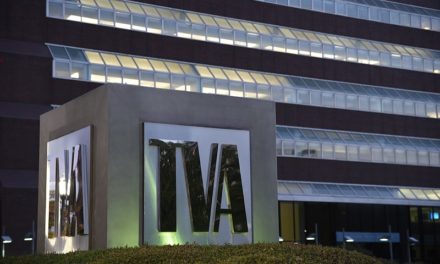As we wrote earlier in this series, the Memphis economy has reached the moment of truth.
Languishing in the lower rungs of the economic indicators that matter, we have reached the point where we either snap out of it or we sink into the abyss with cities like Cleveland who are scratching to find their economic equilibrium in an unforgiving economy.
It’s that serious, and the choices are that stark. In the family of cities today, the rich get richer and the poor get poorer. It doesn’t take a Harvard University economist to point out which group we are in.
Leaping Ahead
Today, cities that are successful are becoming ever more so, gaining momentum, attracting talent and gaining knowledge economy jobs. Likewise, cities that are floundering are failing behind at a quickened pace, lacking the bold strategies and the break from business as usual that can pull them out of the downward spiral, reject a reliance on low-wage, low-skill jobs and adopt strategies that have the potential to shake off the civic lethargy and to set a dramatic course for the future.
It’s not going to be easy for the cities that are floundering. In other words, it’s not going to be easy for Memphis if we don’t get out of the bottom rankings of the 50 largest metros.
We have no margin for error, and we have to start doing things right. Really right. Right now.
To have any chance at all, cities like ours need leap frog strategies that catapult them ahead of rival cities. In Memphis’ case, it would take a major leap forward just to get to the median in most economic indicators, but that would be a start.
Seeing A New Future
Mary Jo Waits – a guest on Smart City Radio several years ago and someone who pioneered these kinds of strategies for Phoenix and State of Arizona – explained the leapfrog approach this way:
“The principles are straightforward, whether for companies or communities. It’s a one-two punch: Spot opportunity and respond faster and better than anyone else. Remember when Steve Jobs and Apple challenged IBM? They didn’t do it by catching up, by building a better mainframe.
“They did it by seeing a different future, betting on the personal computer and leapfrogging over IBM. It works for regions, too. Austin and San Diego leapfrogged over most U.S. metropolitan areas by capturing more talent, research funds and science- and technology-oriented jobs in a relatively short period, less than a decade.
Take Your Best Shot
“Not entirely. Mostly, leapfroggers pick their shots. Sometimes, the best shot is to play at the edges, aiming to set the pace of innovation. And sometimes, in this economic whirlwind, the best shot is to follow the ‘first mover.’ Appropriating an idea that is already working in the world can produce the quickest results.
“Ray Kroc didn’t invent McDonald’s; he took the idea from brothers Dick and Maurice McDonald when he bought their small chain of burger joints. And Home Depot founders Arthur Blank and Bernie Marcus didn’t invent the first warehouse-outlet hardware chain. They got the ‘big box’ concept from their earlier employer, Handy Dan Home Improvement.
“But copying a good idea is not enough. You have to make the idea your own, grafting it onto your situation. And you have to improve on it so that your competitive position takes a big leap forward, as do the benefits it offers. Leapfrog players pursue with single-minded focus big jumps in performance.”
Improving ED
That in a nutshell is the challenge facing MemphisED, the economic growth part of Memphis Fast Forward, and all the rest of us.
We’ll know we’re on the right track because we have at least quit talking about distribution as the Holy Grail (although when we quit giving tax breaks for distribution, it will be a major step forward) and start talking about entrepreneurship and innovation. We’ll know we’re succeeding when we quit giving away tax freezes for marginal industries that do nothing to improve job opportunities or job skills for our workers. We’ll know we’re on the right track when we yank down all the “America’s Distribution Center” signs that remind every visitor that we have set such low expectations for ourselves.
As a result, there’s no time like the present to dream big dreams. Pursuing the same old industry anchors is risky if the ultimate aim is to transform Memphis into a strong competitive position for today’s talented workers – whose presence in turn attracts new jobs.
In fact, if you want to predict our success in the future, throw away all the statistics and graphs. There are only two indicators that we really need to watch – the percentage of Memphians who have college degrees and the poverty rate. There’s no more accurate proxy for future success than these.
Flunking Out
Unfortunately, Memphis is near the bottom of the top 50 U.S. cities in the percentage of college graduates and near the bottom in the percentage of young people in college and near the top in the percentage of people in poverty. In other words, we can sift through dozens and dozens of strategies, but at the end of it all, every one of our programs need to aim at doing one thing – increasing the percentage of college-educated workers in Memphis and the ultimate measurement of success is moving people from poverty to the economic mainstream. Absent a change in those numbers, Memphis’ future is pretty much predetermined.
Most of all, we need to become a city where people choose to live and work. That’s the toughest challenge of all, because it requires a wholesale shift in our mindset about who we are and who we can become. But in the end, that’s the task ahead, because if we don’t accept it now, we have preordained Memphis’ future as a floundering city.
In the past, economic development programs like Memphis 2005 – the much heralded answer to solve our structural economic problems and to revive our economy at the close of the 20th century – have received widespread support from the private and public sectors, but in the end, their real impact was limited.
The reasons included alienation of many economic development groups that were expected to accept responsibility for goals but received no money to achieve them, lack of the community-based support that was needed for the program to become implanted in the Memphis DNA and a tendency to see economic growth in terms of the old, gas-dependent economy.
There are cautionary tales from Memphis 2005 as EDGE considers ramping up new plans to grow the economy. Most of all, there’s the need to be realistic and to emphasize results rather than marketing, to emphasize quality of place rather than cheapness of place, and to see the future as more than an extension of the present. Memphis often suffers from civic amnesia when it comes to the history of past economic development plans, and this time, we need to be clear-headed about potential pitfalls.
Sticking With The Facts
We should consider our economic development plans in light of MIT’s Sean Safford’s instructive report, “Why The Garden Club Couldn’t Save Youngstown: Civil Infrastructure and Mobilization in Economic Crises.” In his research, Mr. Safford compared two historically and economically similar cities in the Rust Belt – Youngstown, Ohio, and Allentown, Pennsylvania – and reached conclusions that he shared on Smart City Radio about why Allentown succeeded and Youngstown failed.
“Youngstown has suffered from an inability to develop a coherent approach to attracting inward investment, a lack of entrepreneurship and the inability of major local employers to transform in ways that benefit the community,” he wrote, citing causes that deal with social network density, social capital, elitism and duplication.
Learning From Others
The reason that social organizations couldn’t save Youngstown, in Mr. Safford’s opinion, was that the civic organizations “rather than being forums of interaction, then, these were simply places were social status was affirmed. In the end, this may have done more harm than good by strengthening the ability of a small group of actors to assert narrow interests over those of the community more broadly. Moreover, these ties ultimately proved extremely brittle leaving the community without strong leadership when it was absolutely necessary to have it.”
The lessons of Youngstown are important for Memphis. Despite our Southern status, our city has a gritty city edge to it, complete with gritty kinds of problems more in common with industrial cities like Youngstown. That’s why the Youngstown connection is so intriguing to us, and what we can learn from it.
As for lessons from our own past, they are especially useful right now as well.
Lessons From 2005
So what are they?
• The ultimate outcome of the plan is new thinking, not just new money for economic development budgets and new marketing.
• Success requires sustained leadership and attention that transcends the initial push.
• It’s about leadership – engaged, committed and inventive – who are able to think of the future as more than just an extension of the present.
• It’s about collaboration between key Memphis organizations, not just top-down direction without meaningful input along the way.
• It’s about spreading the wealth; if the help of organizations are needed, they need the money to make it happen.
• It’s about increasing the capacity of existing organizations rather than creating a bevy of new task forces, committees and groups.
• It’s about average Memphians hearing a narrative that they can imagine themselves being a part of.
• It’s about one over-arching vision that encompasses all strategies into a cohesive, easy-to-understand, aspirational story.
• It’s about focusing on key levers of the greatest change – such as increasing the number of college graduates in our workforce.
• It’s about measuring success by our ability to leap frog ahead of the competition, not just by improving our economic performance.
• It’s about calling a spade a spade by ignoring the spin and calling the Memphis economy what it is – in crisis.
Boiling Water
In the end, it’s about creating a city where people, especially middle-income families and college-educated professionals, come to work and live. It’s about realizing that selling Memphis for its cheapness is in the end a prescription for short-term success and long-term failure. The cities that are succeeding and prospering in the new economy are those who are selling quality, and yes, they have taxes higher than ours.
Two years ago, we wrote: “Sometimes in Memphis, it’s as if we’re the city equivalent of the frog sitting in the pot on the stove as the water gets warmer and warmer until it’s boiled to death.” That’s why many national urban commentators have already given us up for dead, ascribing to us the fate that awaits any city seen as dysfunctional and out of control.
But things are changing. There is widespread understanding in Memphis that the water is indeed boiling. And that is indeed progress.
Now, we need to take the kind of actions that are bold enough to not only turn around our economy and get us out of the bottom rungs of economic performance but spring board us ahead of our competitive rivals. It will be hard and it will take time. But we have the grassroots strength, the emerging creativity in some unlikely places and a singular determination to make it happen. Most of all, we have a history of innovation and entrepreneurship whose spirit we should tap into as we move ahead.
Other cities have shown that it can be done. And if other cities have been able to do the same, why should we say that we can’t?
Part 5 of series on economic growth.




